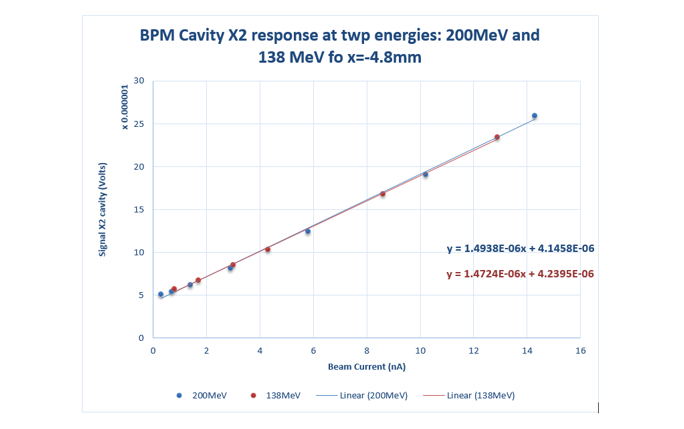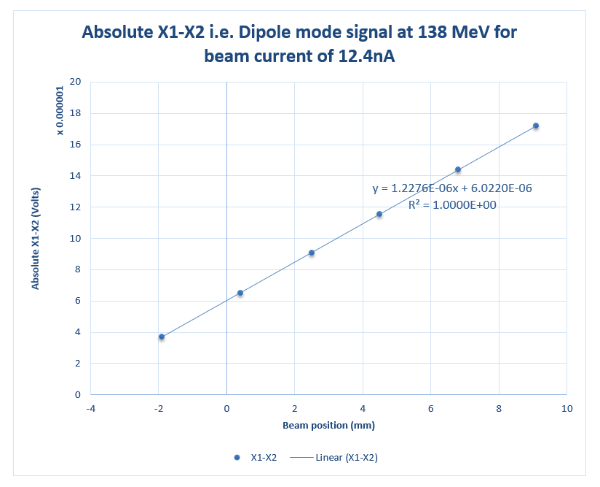Beamline measurements completed with PSI Cavity BPM

Sudharsan Srinivasan, OMA Fellow based at PSI in Switzerland, has successfully completed measurements with beam of a non-invasive beam position monitor (BPM).
This prototype is developed on the principle of using the electric dipole resonance mode, so-called TM110 mode. Earlier in the year, successful test-bench measurements were conducted and paved way for installation of the device in the beamline and measurements with beam. Prior to installation, cavity asymmetries were induced in the BPM prototype while reassembling. This shifted the dipole mode from the target frequency of 145.7 MHz by approximately 0.5 MHz for the horizontal plane and by 2.4 MHz for the vertical plane, thus affecting the signal sensitivity of the BPM.
The preliminary results shown above are taken from measurements in the horizontal plane where the resonance shift resonance is very small.
It was found that BPM behaves as expected and gives a signal that is proportional to beam intensity for a given offset. In addition, since the BPM signal is a function of the bunch charge and beam offset, it was demonstrated that the signal output was not significantly influenced by beam energy.
By subtracting two horizontal signals, the monopole mode can be eliminated, doubling the amplitude of the dipole mode signal which is proportional to the beam offset. This enhances the sensitivity of the measurement as can be seen in the plot below.
Absolute signal of the dipole mode at 138MeV. Subtracting the two X plane cavities subtracts the monopole mode and doubles the amplitude of the dipole mode. The absolute signal is directly proportional to the beam offset.
The measurements have successfully demonstrated the superior performance of this new monitor, making it a very interesting solution for essentially any medical accelerator.
